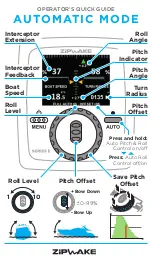
●
●
PippinHT Operations Manual
6-1
460005 Rev G
6
Sample Preparation
6.1 Input Sample Characteristics
When running the PippinHT
™, characteristics of input DNA can affect separation
resolution and efficiency of product recovery. The following general guidelines should be
followed:
•
Ionic strength:
The ionic strength of the sample should be lower than the
ionic strength of the buffer (80mM monovalent ions). High salt concentrations can
result in unpredictable DNA mobility.
•
Protein in the sample:
DNA-binding proteins such as ligases or polymerases
can affect the mobility of fragments during separation. Proteins can also reduce
DNA recovery from the elution module by increasing the binding of DNA to the
ultrafiltration membrane at the back of the elution module. For best results,
samples should be de-proteinized prior to loading whenever possible.
•
Input DNA size distribution:
A knowledge of the input size distribution is
obviously important to program accurate size selection settings. PippinHT
cassettes are calibrated using the Agilent Bioanalyzer to evaluate input and
product sizes, and so, for best results, input size distributions should be
evaluated using the Bioanalyzer. For low concentration samples, the Agilent HS
chip is very useful .
6.2 Preparing DNA Samples for the PippinHT
The marker provided with the
PippinHT reagent kit may be used as either an internal or
external marker. The method of sample preparation is dependent on the type of marker
used.
6.2.1 Sample preparation for use with an internal standard
1.
Bring the DNA sample up to 20 µl with TE.
2.
Bring the Standard/Loading-solution mix to room temperature (return to 4°C
immediately after use).
3.
For each sample, combine 20 µl of sample with 5 µl of Standard/Loading-solution
mix.
4.
Mix thoroughly by vortexing and centrifuge briefly.
















































